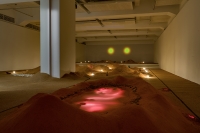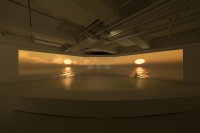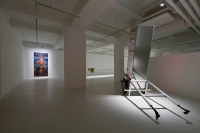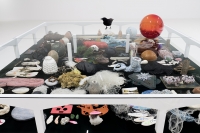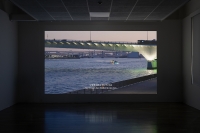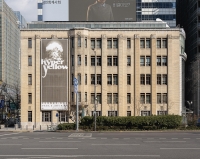Minouk Lim-Hyper Yellow
Period
2025.2.28.(Fri) ― 4.20.(Sun)
Venue
Ilmin Museum of Art (Exhibition Hall 1, 2, 3 and Project Room)
152 Sejong–daero, Jongno–gu, Seoul, Korea
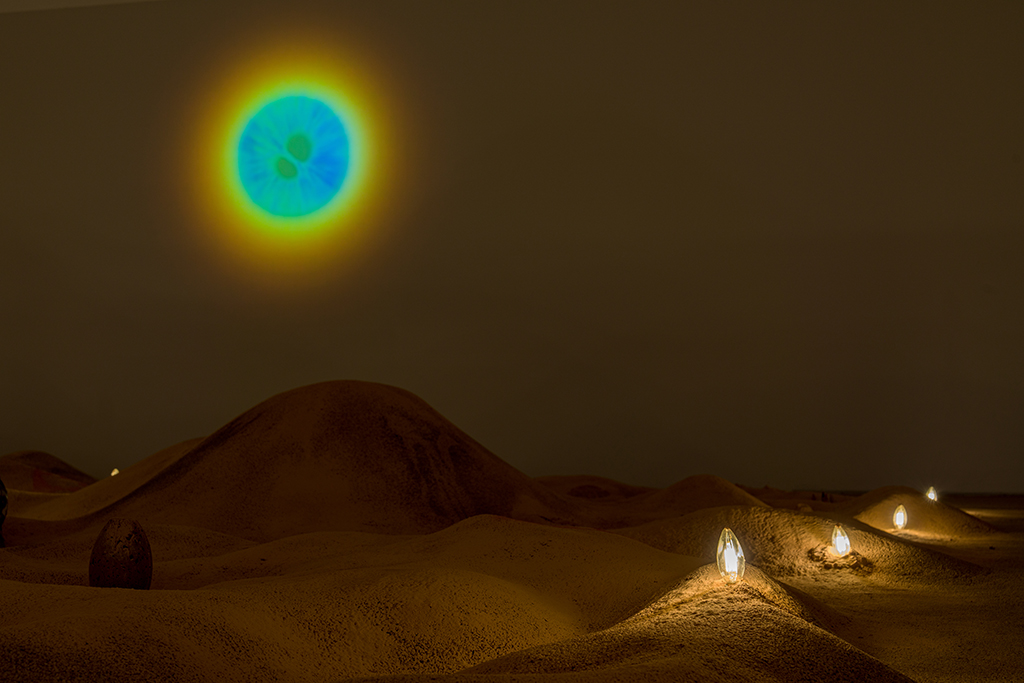
Over the past three decades, Minouk Lim has consistently faced questions about the political and activist roles of art and its social engagement. This is hardly unexpected, considering the trajectory of her practice. From singing songs of joy and sorrow in the ruins of redevelopment left in the wake of Korea’s modernization and urbanization (New Town Ghost) to walking with an assemblage of salvaged debris strapped to his back (Portable Keeper), her work has exposed what the agenda of progress and bright futures conceals in its underbelly through a distinctly sensorial approach. From the late 2000s through the 2010s, this sensibility evolved into performance documentaries that captured multifarious events within specific sites. For instance, in S.O.S–Adoptive Dissensus, an audience rides a riverboat along the Hangang River to witness three concurrent events—a protest of students holding up mirrors, two lovers wandering, and an unconverted long-term political prisoner giving a monologue; in The Weight of Hands, a group of tourists is captured in thermal imaging as they disembark from a bus and trespass a restricted construction site; and in FireCliff 2, a torture survivor recounts the trauma of having their life shattered by an authoritarian regime to a psychiatrist in a theatrical setting.
The notion of “movement” recurrent in her work entails a means to arrive at ruins, restricted areas, and forgotten places. In that journey, chance encounters reveal unexpected affinities between seemingly disconnected elements. As such, a keen attention to affinities inevitably invokes reflections on community. Yet, Lim examines the rather strange nature of community, neither framing it in the familiar “ideal” rhetoric of hospitality and relationships nor resigning it to something useless and hopeless. As individuals, we all exist in time, endlessly repeating the cycle of remembrance and forgetting. The time and process of personal memory collapsing into history and individuals dissolving into collectives necessarily comprise both violence and healing. Thus, Lim adopts a language closer to a neutral, silent sign language rather than a grandiose speech as she avoids drawing quick conclusions from memories and instead destabilizes existing perceptions and provokes imagination. For Lim, art bears the responsibility of instilling tension into memory—whether it is the fading memory of individuals or the reification of history. Here, we must ask: But is this enough? Would it not be reductive to frame her practice neatly into the rhetoric of “a means of healing” or “a welcoming community?” Hyper Yellow revisits Lim’s practice to grapple with precisely these questions.
Lim continues to ask herself, “Every time I have to choose a medium or tool, do I reach for the brush out of habit? Or pick up the camera? Or listen to others? Do I, myself, speak in that way? Why do I use this medium?” The wide array of mediums she employs—video, performance, drawing, sculpture, painting, and installation—is not merely a pursuit of variety. Instead, her engagement with a medium is a means of interrogating its very essence, turning back the questions that art poses to the artist. How does social engagement become an act of pointing to itself in art? What kind of complex structure underlies the political and activist roles of art? If neither truth nor virtue is found in beauty anymore, how does one reclaim beauty? The answer Lim seeks to these questions may lie in the reason that artists, amid an overflowing field of sensory stimuli, ceaselessly fumble through the possibilities of art while museums continue to seek art.
This body of work, emerging from the language of painting, unapologetically reveals the ornamental qualities woven throughout Lim’s practice. In the history of contemporary art, ornamentation and decoration have long been positioned as a threat to conceptual rigor. Yet, for Lim, embellishment is not a superfluous addition or a function of commercial design; instead, it invokes the power of ritual and complements our lives. To her, decoration is an artistic vision: it embodies a devotion to meticulous craftsmanship and a method of tending to the fragile, ephemeral things that come about in our contemporary world. Lim’s radicalism stems from this convergence, where her keen outlook on reality and vision for aesthetic completeness intersect. (An excerpt from the Curatorial Statement)
Organized by
Ilmin Museum of Art
Sponsored by
Arts Council Korea, Hyundai Sungwoo Holdings
Artist
Minouk Lim
Director
Kim Taeryung
Chief Curator
Yoon Yuli
Curator
Baik Jisoo
Curatorial Dept. of Ilmin Museum of Art
Yoon Jihyun, Shin Jihyun, Lee Jieon, Bae Jeongin, Jeoung Yeonji, Lee Chaerin
Publicist
Park Sunho
Technical & Art Production
Seokundong
Graphic Design
paper press
Translated by
Kim Jisun, Mouat Colin
Support
Kim Eunsol, Azymkim, YooBooza, HwiHwi
Photography
Studio Oscilloscope
